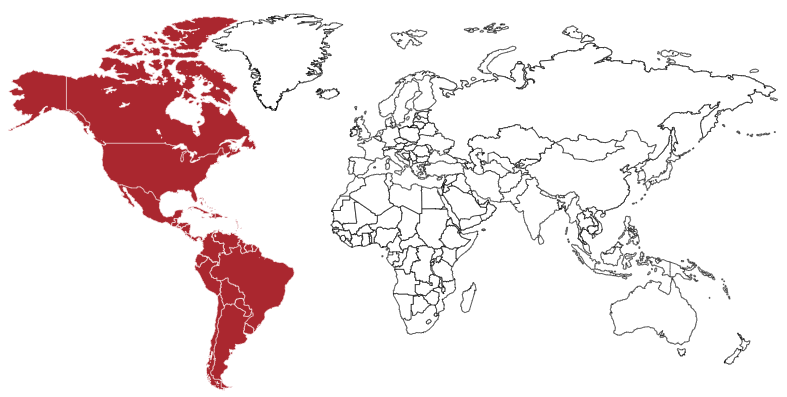Salmonella in North and South America
In the USA the number of Salmonella cases reported has been steadily declining since 1991. S. Enteritidis and S. Typhimurium are common causes of salmonellosis globally.

United States of America
Salmonella in humans
Salmonellosis is most prevalent in young children.
In keeping with the global trend the three most frequently isolated serotypes are:
- S. Typhimurium.
- S. Enteritidis.
- S. Newport.
These three serotypes account for 50% of all isolates.
Salmonella in poultry
In 2001 the top 5 serotypes isolated from chickens were:
- S. Enteritidis (31%).
- S. Heidelberg (27%).
- S. Kentucky (8%).
- S. Typhimurium (8%).
- S. Senftenberg (4%).
On farms where cages, walls, and ceilings were washed between flocks and feeders were disinfected no S. Enteritidis was isolated. Poultry houses with a high rodent population had a higher rate of S. Enteritidis infection.
The 5 top serotypes isolated from turkeys were:
- S. Senftenberg (26%).
- S. Heidelberg (18%)
- S. Typhimurium (14%).
- S. Muenster (7%).
- S. Bredeney (6%).
For more information see:
PHLIS surveillance data on the CDC web site, USA
Canada
In 2000 the top 3 serotypes causing human Salmonellosis were:
- S. Typhimurium (22%).
- S. Enteritidis (21%).
- S. Heidelberg (13.3%).
South America
In 2001 S. Enteritidis was the most commonly isolated serotype from humans and animals.
